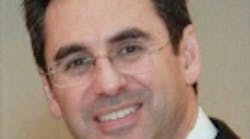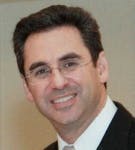Closed, open, and selectively open CAD/CAM architecture: what does it mean?
Oct. 11, 2010
By Martin Jablow, DMD, FAGDIn recent months, there has been an increased amount of discussion in the dental industry regarding open, closed, and selectively open architecture with respect to dental chairside CAD/CAM systems. Although these terms are used commonly in the computer and other high-tech industries, they may be unfamiliar to the average dentist. Hopefully, I can provide some clarification.The main difference between a closed-architecture CAD/CAM system and an open-architecture CAD/CAM system is that a closed-architecture CAD/CAM system does not integrate with any components manufactured by another company. In other words, closed-architecture systems are fully proprietary, whereas an open-architecture CAD/CAM system can be integrated with the components manufactured by many outside vendors. At first glance, an open-architecture CAD/CAM system may seem to be the way to go, given the flexibility of component choice. However, there is no guarantee that a multiple-vendor component system will integrate seamlessly or perform optimally. There may also be the complexity and inconvenience of multiple-vendor installations, service, warranties, and training. This can be a nightmare for a busy dentist, especially one who is gradually evolving toward a high-tech practice.By comparison, a selectively open-architecture CAD/CAM system enables integration with other vendors, but only with components manufactured by the most reputable dental industry companies, which must meet the strictest criteria of the CAD/CAM manufacturer. The underlying philosophy for selectively open architecture is that quality is far better than quantity when forging technology partnership agreements.CEREC® by Sirona Dental Systems is the leading example of a selectively open CAD/CAM system. Sirona’s policy is to make its CEREC CAD/CAM technology compatible with third-party components on a case-by-case basis, contingent on very strict third-party partner criteria, such as product quality, service record, market share, and financial stability. These are the kinds of things that dentists should care about, but in reality do not have the time or access to the market intelligence required to make a sound evaluation.Sirona executives have explained to me that the company chose to be selectively open because it believes in taking a systems approach to chairside and dental laboratory CAD/CAM. Therefore, every component must be compatible in clinical functionality and performance, while meeting the highest quality standards. One weak link in the system can have a negative impact on a dentist’s production efficiency and the esthetic quality of the finished restorations. For example, if a dentist or lab owner cobbles together a CAD/CAD system using equipment from a different scanner manufacturer, a different software manufacturer, and a different milling machine manufacturer and then produces a poor quality restoration, what caused the problem? Was it a bad scan, a software bug, or a milling defect? The more companies you bring into the CAD/CAM equation, the more problems and incompatibilities can occur. Some CAD/CAM technology vendors might claim that using open-architecture systems is an advantage, but picture their scenario: if a company only makes a digital scanner, they need to integrate with other technology vendors in order to remain relevant in the marketplace. Also, the vendor might choose to be open if its system has minuscule market share and needs to fast-track market penetration with the help of more established technology partners. In both cases, it’s a piggyback type of relationship desired by vendors who have everything to gain and little to lose. Compare this with a selectively open-architecture CAD/CAM vendor that has invested heavily in developing, introducing, and continuously upgrading complete CAD/CAM systems, and you can see why some companies need to embrace the open-architecture model in order to survive. For the dentist, there may be more convenience, optimal performance, and peace of mind in choosing a selectively open-architecture manufacturer that stands firmly behind an entire, clinically proven CAD/CAM system.
Martin Jablow, DMD, FAGD, received his dental degree from New Jersey Dental School in 1986 and practices in Woodbridge, N.J. He received his fellowship in the Academy of General Dentistry and is certified in various laser wavelengths. He is a member of the American Dental Association and the New Jersey Dental Association. He is an attending dentist at John F. Kennedy Medical Center in Edison, N.J., as well as a long-time member of his county’s Peer Review Committee. Dr. Jablow is president of Dental Technology Solutions, a lecture and consulting company. Dr. Jablow is the writer of the Dr. Bicuspid.com Question and Answer column called “Ask Marty.” He also writes a monthly column for Dental Learning Hub’s Apex magazine. Dr. Jablow has spoken at many major dental meetings including the ADA Annual Session, the Yankee Dental Congress, and the California Dental Association. Consulting with various high-technology companies, Dr. Jablow is involved in the process of improving established products and testing new products and techniques. He consults with dental offices on implementing computers and technology into their practices. Dr. Jablow enjoys promoting the use of technology in the dental office through lecturing and writing articles for various national dental publications, with an emphasis on improving patient care.






